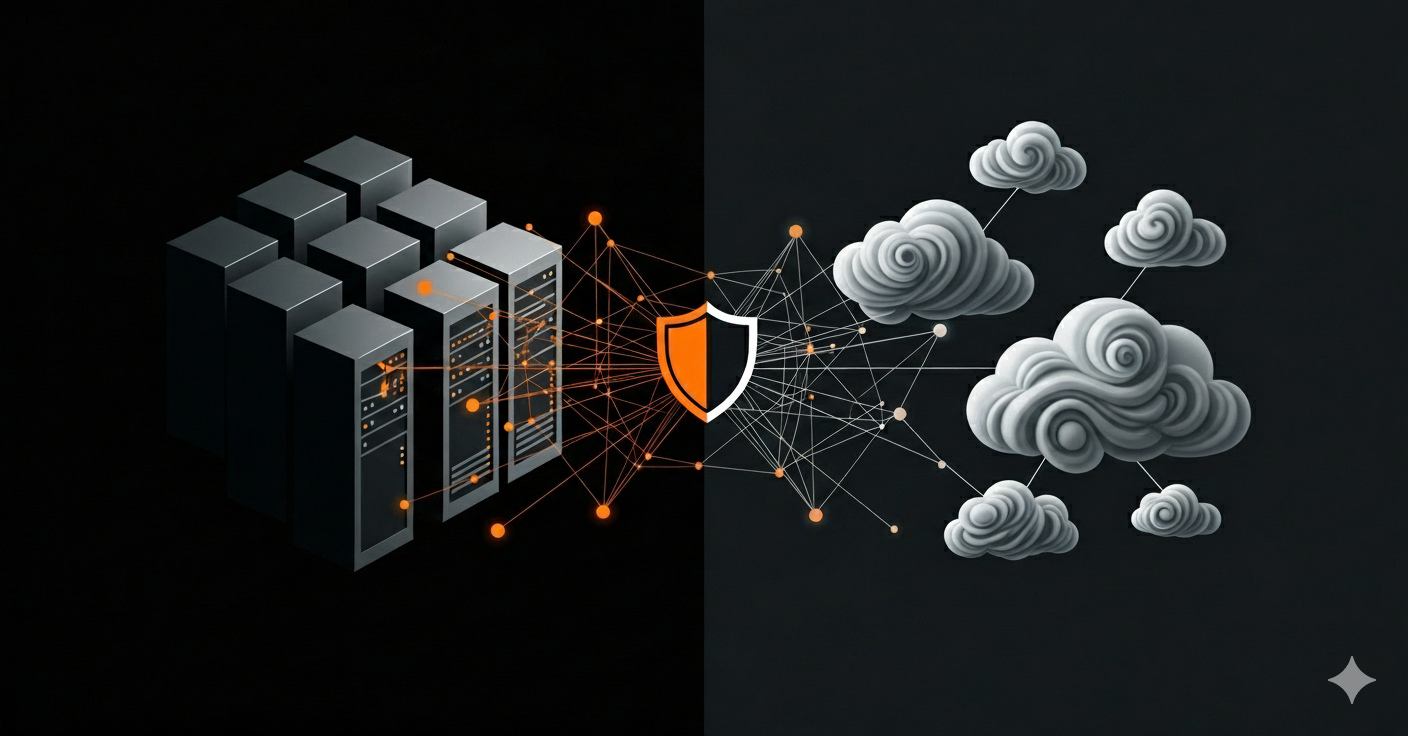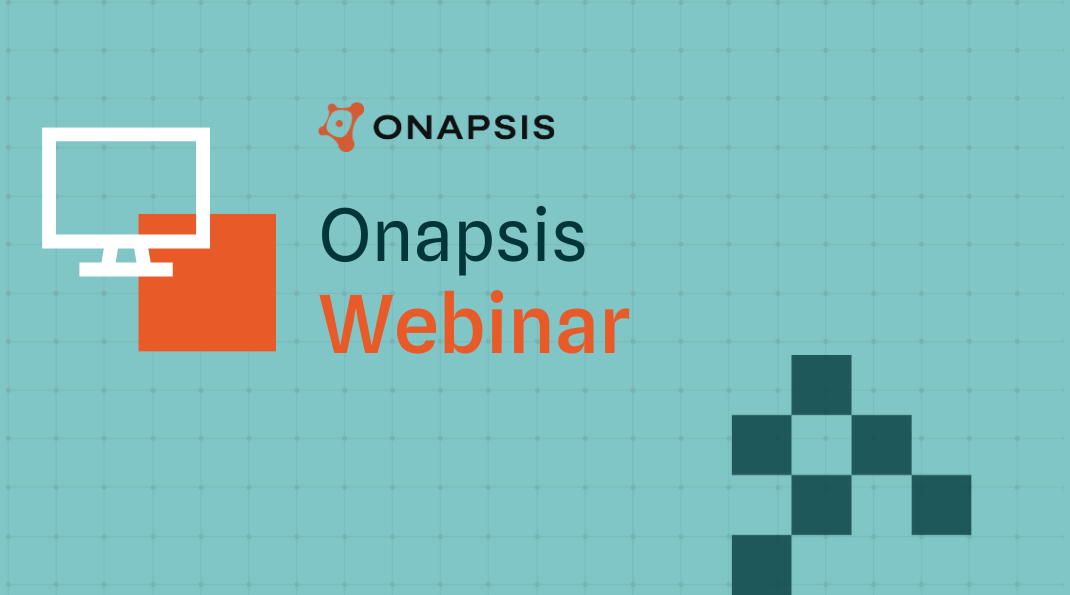A Leader's Guide to Hybrid SAP Environment Security Challenges

The Reality of the Hybrid SAP Landscape
For most modern enterprises, the idea of a purely on-premise or purely cloud-based SAP landscape is unrealistic. The dominant operational model is the hybrid SAP environment, an integrated ecosystem where workloads and data are strategically placed across on-premise data centers, private clouds, and multiple public cloud platforms like AWS and Azure. This model isn’t just a transitional phase; it’s a long-term strategy driven by compelling business needs. These drivers include phased, low-risk migrations of certain workloads, strict data sovereignty laws requiring specific data to remain in-country, and the practical reality of supporting legacy systems that are not yet ready for the cloud.
While this flexibility is a key business enabler, it creates a deeply complex and fragmented technology landscape. The core challenge for today’s leaders is managing the security and compliance of their SAP cloud security strategy consistently across these disparate environments. A security policy that is effective on-premise may be insufficient in the cloud, and the connections that bridge these worlds create new, often unmonitored, attack surfaces. This guide provides a strategic framework for understanding and overcoming the primary security challenges of the hybrid SAP model.
Top 5 Security Challenges in a Hybrid SAP Deployment
While a hybrid model provides flexibility, it creates an environment where traditional security assumptions break down. Leaders must address several distinct challenges that arise from managing SAP systems across these fragmented landscapes.
1. Inconsistent Security Policies and Controls
One of the most significant challenges is maintaining inconsistent security policies between on-premise and cloud environments. The security controls, hardening standards, and network architectures that protect your on-premise data center do not automatically translate to the cloud. This often results in security gaps, where cloud-based systems are deployed with weaker configurations. For example, an on-premise firewall may have a mature, highly restrictive ruleset, while a cloud-based Network Security Group might be deployed with overly permissive “any-any” rules during testing that are never corrected, creating vulnerabilities that would not exist on-premise.
2. Complex Identity and Access Management (IAM)
Managing a single, consistent user identity in a hybrid world is incredibly difficult. Without a centralized strategy, organizations often struggle with complex Identity and Access Management, leading to fragmented user roles, inconsistent authentication methods (like MFA), and an inability to get a clear picture of a user’s true entitlements. A common example is a user who moves from a finance role (with on-premise access) to a sales role (with cloud CRM access). If their old finance permissions are not properly de-provisioned, they retain unnecessary access, creating a significant and unmanaged risk.
3. Data Synchronization and Exfiltration Risks
Data in a hybrid environment is constantly in motion, moving between on-premise systems and the cloud. This creates two primary risks: the data can be intercepted while in transit if connections are not properly secured, and the cloud environment itself presents a larger attack surface for data exfiltration risks. A common scenario involves a custom-built API used to sync customer data between an on-premise ERP and a cloud service. If that API has authentication weaknesses, it can be exploited by an attacker to pull massive amounts of sensitive data directly out of the core system.
4. Insecure Connectivity and Integrations
The interfaces that connect your on-premise and cloud systems (such as APIs, RFC connections, and other integrations) are a primary target for attackers. Insecure connectivity can turn these essential data pathways into open doors for lateral movement. For instance, a compromised cloud application with a trusted connection back to the on-premise landscape could allow an attacker who compromises the cloud environment to pivot and attack core financial systems, bypassing traditional perimeter defenses entirely.
5. Fragmented Visibility and Threat Monitoring
In a hybrid landscape, security data is generated across multiple, disconnected platforms. This fragmented visibility makes it nearly impossible for a security operations center (SOC) to get a unified view of an attack. Imagine an attacker uses a compromised credential to log into a cloud SAP system, then uses that access to make a remote call to an on-premise system to exfiltrate data. A SOC team looking at separate cloud and on-premise monitoring tools would only see two isolated, low-level alerts, failing to connect them as part of a larger, sophisticated attack until it’s too late.
Anatomy of a Hybrid Attack: A Real-World Scenario
The security challenges of a hybrid SAP environment are not theoretical. They create practical opportunities for attackers to execute sophisticated, multi-stage attacks that are difficult to detect. Consider the following common attack path:
Step 1: The Initial Compromise in the Cloud
The attack begins not with a complex technical exploit, but with a simple phishing email targeting a user with legitimate access to a cloud-based SAP application (like SuccessFactors or Ariba). The attacker steals the user’s cloud credentials. Because MFA was not consistently enforced for this application, the attacker gains an initial foothold in the cloud environment.
Step 2: Pivoting from Cloud to On-Premise
Once inside the cloud application, the attacker discovers a poorly secured API that synchronizes data with the on-premise SAP ERP system. This insecure connectivity is the pivot point. The attacker uses the API to send malicious commands from the compromised cloud system back to the on-premise environment, effectively bypassing the corporate firewall and other perimeter defenses.
Step 3: Achieving the Objective and Exfiltrating Data
Now inside the on-premise network, the attacker can move laterally to their ultimate target: the core financial data in the SAP ERP. They locate and exploit an unpatched vulnerability to gain elevated privileges, access the sensitive data, and exfiltrate it out through the same compromised cloud connection, making the data theft appear as legitimate application traffic.
Step 4: Why It Went Undetected
This attack succeeds because of fragmented visibility. The security team saw a minor alert for a suspicious login in the cloud (Step 1) and the SAP Basis team saw some unusual API traffic on-premise (Step 2), but because they were using separate monitoring tools, they couldn’t connect the events. They failed to see the full attack chain until after the data was already gone.
A Strategic Framework for Securing Hybrid SAP Environments
Overcoming the security challenges of a hybrid SAP landscape requires a deliberate and unified strategy. Instead of managing security in silos, leaders must adopt a framework that enforces consistent controls and provides centralized visibility across all environments.
Establish a Unified Security Baseline
The first step is to establish a unified security baseline. This means defining a single, mandatory set of security standards for system hardening, patching, and configuration that applies to all SAP systems, regardless of where they are hosted. This “gold standard” configuration should be codified and used as the benchmark against which all systems (on-premise and in every cloud) are continuously audited to identify and remediate any policy drift automatically.
Centralize Identity and Access Governance
To address the complexities of hybrid IAM, organizations must centralize Identity and Access Governance. The goal is to create a single identity for each user that is managed through a central Identity Provider (IdP). This not only enables consistent enforcement of authentication policies like SSO and MFA across the entire landscape but also provides a unified view of user entitlements, which drastically simplifies access management, user access reviews, and reduces overall risk.
Secure All System Connections and Interfaces
Every connection point between your on-premise and cloud environments must be treated as a potential attack vector and be rigorously secured. A key part of a hybrid security framework is to secure all system connections and interfaces. This involves a defense-in-depth approach that includes enforcing end-to-end encryption for all data in transit, implementing strong, modern authentication for all APIs and RFCs, and using network firewalls and segmentation to inspect and control traffic flowing between your different environments.
Integrate Monitoring into a Central SIEM
To close the visibility gap, organizations must integrate monitoring into a central SIEM. The goal is to forward security logs and alerts from all sources (including your on-premise SAP systems, cloud infrastructure (e.g., AWS CloudTrail), and cloud-based SAP applications)into a single security information and event management platform. This is the only way to provide your security operations team with the unified visibility needed to correlate disparate events and effectively detect, investigate, and respond to sophisticated, cross-environment attacks.
How Onapsis Provides Unified Security for Hybrid SAP
Addressing the security challenges of a hybrid SAP landscape requires a platform that can provide consistent visibility and control across all of your environments. While native cloud and on-premise tools are effective in their respective silos, they cannot provide the unified view needed to secure an interconnected, hybrid enterprise.
This is the critical gap that The Onapsis Platform fills. It is designed to secure your business-critical SAP applications with a single, consistent approach, regardless of where they are hosted. Onapsis provides unified visibility by assessing and monitoring for threats in all of your SAP systems (whether on-premise, in a private cloud, or on AWS and Azure) against the same set of security policies and threat intelligence. By identifying vulnerabilities, monitoring for threats, and ensuring compliance with your unified security baseline, Onapsis closes the visibility gap and helps you manage your entire hybrid SAP environment as a single, cohesive landscape.
Conclusion: From Challenge to Resilient Strategy
The security challenges of a hybrid SAP environment (from inconsistent policies and fragmented visibility to complex identity management) are significant, but they are not insurmountable. Overcoming them requires a strategic shift away from managing security in silos and toward a unified, holistic approach.
A truly resilient strategy treats the entire hybrid landscape as a single, interconnected environment. By establishing a unified security baseline, centralizing identity governance, and integrating threat monitoring across all platforms, organizations can close the visibility gaps and enforce consistent controls. This unified approach transforms the complexity of a hybrid model from a security liability into a flexible and resilient business advantage.
Frequently Asked Questions (FAQ)
Is the cloud or on-premise more secure for SAP?
Neither environment is inherently more secure than the other; security depends entirely on the implementation. Cloud providers offer powerful, secure infrastructure, but the customer is completely responsible for securing the SAP application within it. An improperly configured cloud deployment can be less secure than a well-managed on-premise data center, and vice versa.
How do I ensure my security policies are the same everywhere?
The most effective way is to create a unified security baseline that defines your non-negotiable security standards for all systems. Then, use a centralized platform that can automatically audit all your SAP systems (both on-premise and in every cloud) against that single baseline to ensure consistent policy enforcement.
What is the biggest blind spot for security teams in a hybrid SAP environment?
The biggest blind spot is typically the SAP application layer. Security teams often focus on securing the infrastructure (the on-premise servers or the cloud VMs) and the network connections, but they lack visibility into the application itself. This means they miss application-specific risks like custom code vulnerabilities, insecure configurations, and complex authorization issues.
What’s the most effective way to achieve a ‘single pane of glass’ for monitoring?
The most effective way is to integrate monitoring into a central SIEM. This requires a strategy and the right tools to forward security logs and alerts from all your disparate environments (on-premise servers, cloud infrastructure, and the SAP applications themselves) into a single, centralized platform for unified analysis and threat detection.
How does a hybrid model affect our SAP incident response plan?
A hybrid model complicates incident response because an attack can traverse multiple environments. Your incident response plan must be updated to include procedures for investigating and containing threats that cross from on-premise to cloud (or vice versa). This requires clear playbooks and close collaboration between your internal SAP, security, and cloud teams, as well as the cloud provider’s support.



